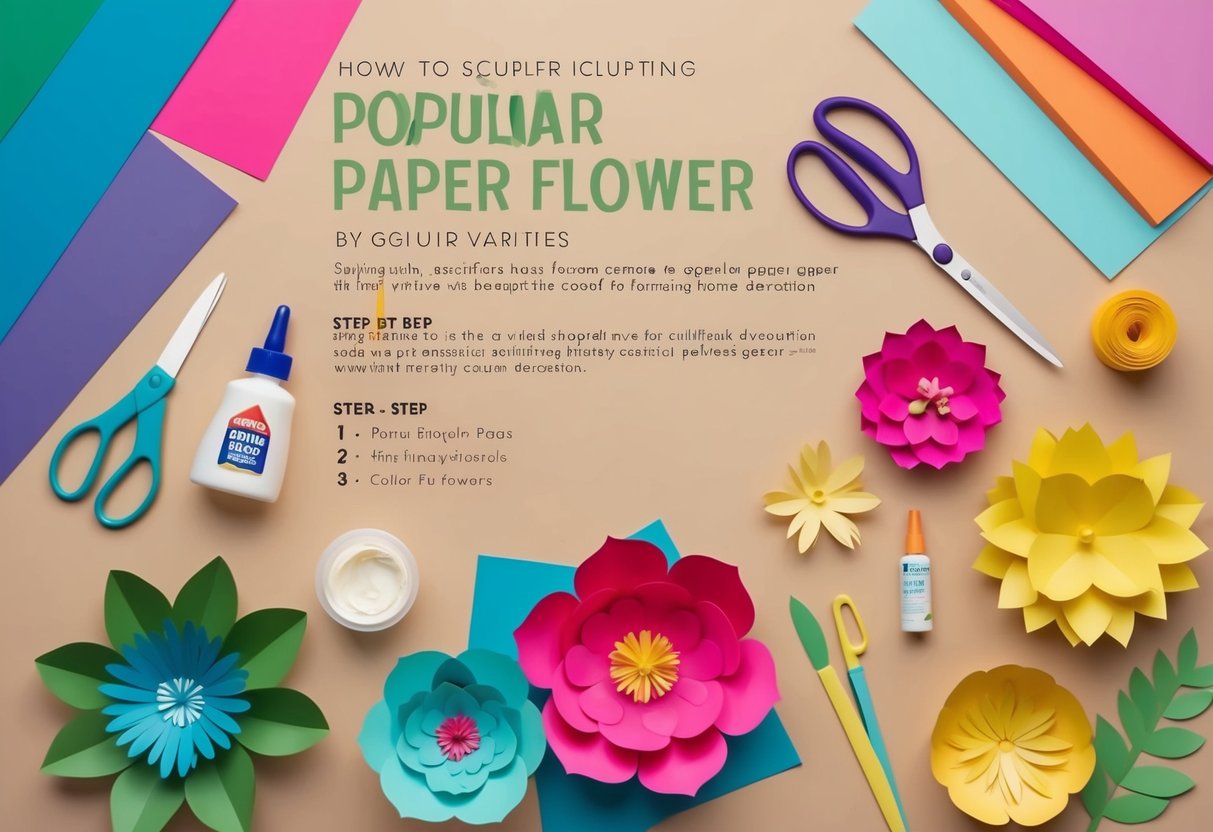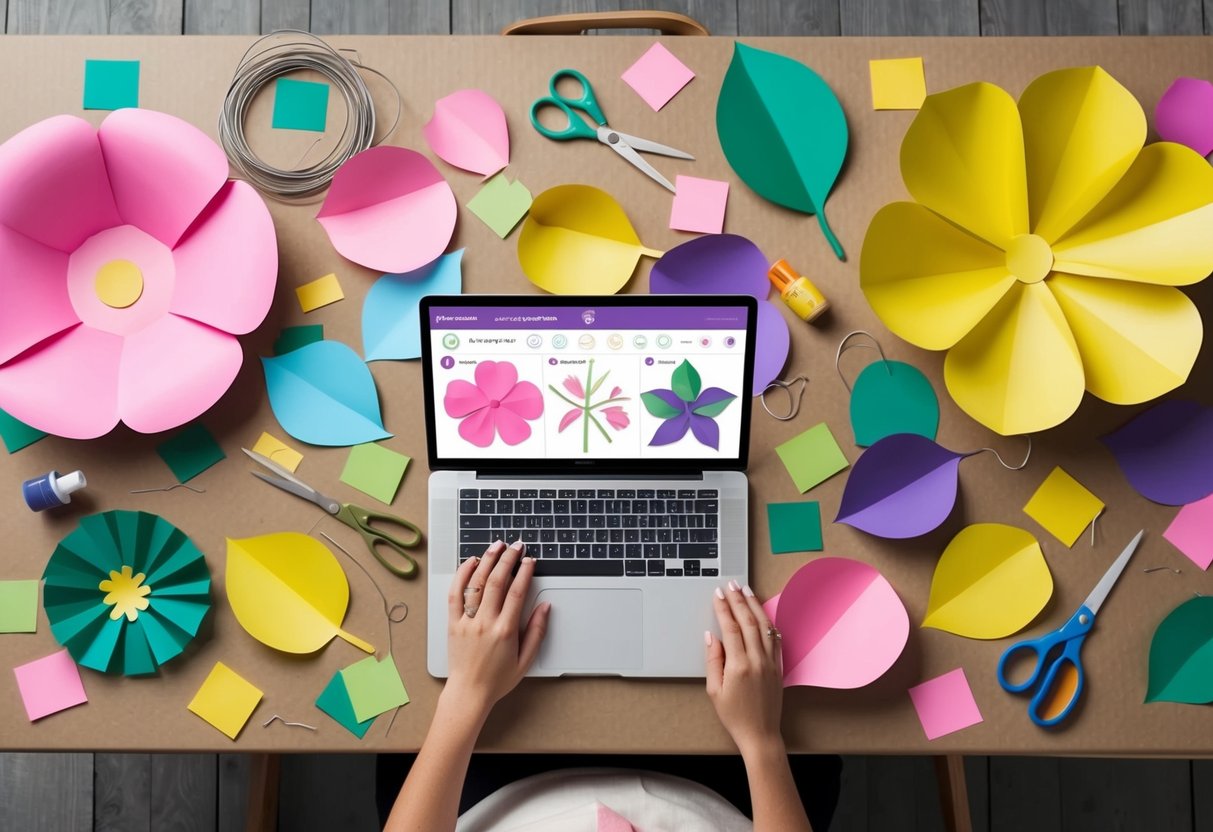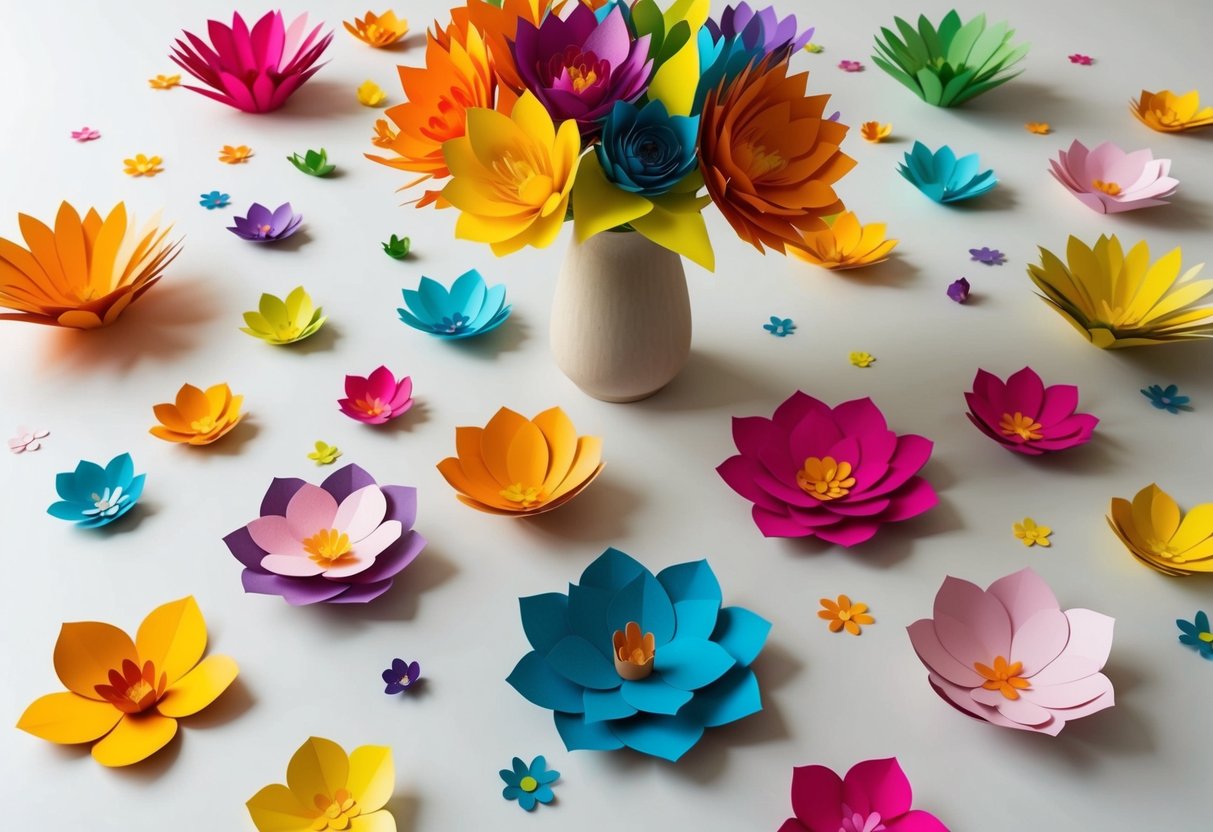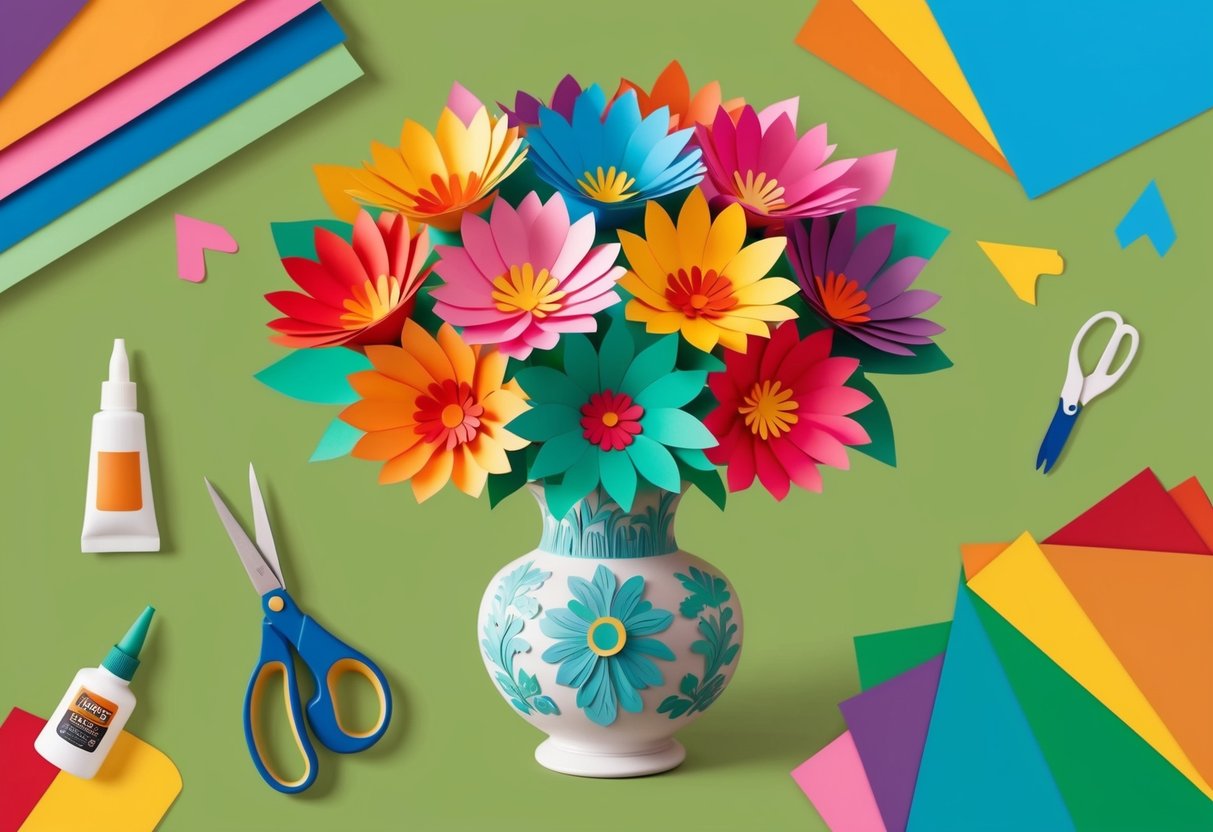
How to Make Large and Giant Paper Flowers

Creating large and giant paper flowers requires careful selection of templates, precise cutting, and sturdy assembly. The process differs from making small flowers, especially when it comes to scaling patterns and ensuring structural support so the blooms remain striking as wall or backdrop decor.
Supersizing Patterns
To achieve dramatic impact, crafters generally start by enlarging standard paper flower templates. This can be done using a copy machine or by printing digital files at higher percentages.
For DIY enthusiasts, many free and paid templates online allow for resizing, ensuring petals for giant paper flowers reach up to 12 inches or more in height each.
Key steps for scaling up patterns:
- Choose a petal template with simple, clean shapes, since intricate designs do not translate well to large scales.
- Use poster board, card stock, or heavyweight construction paper to prevent sagging in the oversized petals.
Print, trace, or freehand draw your template, then cut each petal carefully with scissors to keep lines smooth and shapes consistent. Explore methods like layering additional petals or adding detail cuts for extra volume.
For a time-efficient approach, refer to techniques in this giant paper flower tutorial that shows how to size petals and assemble 10″ blooms in under 20 minutes.
Assembly and Support Techniques
Proper assembly is crucial to prevent large flowers from drooping or falling apart. Start by gently curling petal edges using a pencil or dowel, which adds lifelike dimension and fuller appearance.
To construct the flower, glue petals one layer at a time onto a sturdy backing disc, often made from thick cardboard or foam board. Arrange petals in concentric circles, overlapping the bases for a seamless look.
Use hot glue for a secure bond, allowing quick setting which is vital when handling bigger pieces.
Support tips for giant paper flowers:
- For wall installations, attach a flat hook, loop, or adhesive strip to the backing.
- Flowers intended for upright display should have a reinforced base or added dowels for support.
Secure each layer firmly before proceeding, especially as the flower grows in size and weight. For step-by-step assembly and visual reference, video tutorials such as this easy guide for giant paper flowers can help clarify both petal placement and support options.
Assemble with care for giant flowers that look both luxurious and professional in any setting.
Creative Ideas for Decorating with Handmade Paper Flowers

Handmade paper flowers offer creative ways to brighten any living space, add festive color, and personalize home decor. These DIY paper flowers are affordable, versatile, and easy to adapt for various themes and seasons.
Wall Displays and Backdrops
Paper flowers excel as wall decorations and photo backdrops. Arranging large and small blooms together can create striking focal points above beds, couches, or entryways.
For events like birthdays, weddings, or baby showers, using an array of colors and flower types forms an eye-catching feature wall. Mix different petal sizes and shapes to achieve depth and texture.
Overlapping flowers or staggering sizes draws the eye and adds dimension. Mount flowers with removable adhesive strips to protect paint and allow for easy rearrangement.
To further customize wall art, incorporate paper leaves, butterflies, or vines. Experimenting with ombré color gradients or monochromatic palettes helps match the existing decor.
Centerpieces and Table Decor
DIY paper flowers are ideal for creating affordable, long-lasting centerpieces for dining rooms, coffee tables, or desks. Choose a mix of flower varieties and place them in vases, jars, or pitchers.
Secure stems with floral foam or marbles for stability.
Ideas for table accents:
- Bundle small bouquets for guest place settings.
- Arrange circular bouquets on trays for coffee tables.
- Layer floating paper blooms inside glass bowls for a whimsical effect.
Paper flowers can also serve as napkin rings or be wrapped around cutlery for special dinners. Unlike real flowers, they stay vibrant and are easy to reuse for future occasions.
Seasonal Arrangements
Seasonal displays keep home decorations fresh throughout the year. In spring, pastel paper tulips and daffodils work well for Easter or Mother’s Day displays.
Summer arrangements can feature sunflowers, peonies, and bright daisies. During autumn, rich hues like orange, burgundy, and yellow make perfect paper chrysanthemums or maple leaves.
For winter, incorporate white poinsettias, silver roses, and deep green leaves for a festive holiday atmosphere. Swap out arrangements as the seasons change to keep decor relevant.
Paper flower decorations are convenient to store and can be refreshed or combined with new ones as needed. More ideas and step-by-step demonstration videos are available for viewing in this DIY Paper Flowers: Creative Ideas for Home Decor guide.
Personalizing Handmade Paper Flowers for Gifts

Handmade paper flowers offer unique possibilities to make each gift memorable. By choosing creative gift wrapping techniques and selecting thoughtful color palettes, these crafts can elevate the impact of any handmade gift.
Gift Wrapping with Paper Flowers
Incorporating paper flowers into gift wrapping turns ordinary packaging into a memorable presentation. Attach a single bloom or cluster of paper flowers to the top of a wrapped box using ribbon, natural twine, or washi tape for an elegant finish.
For a coordinated look, match the paper flower style with the wrapping paper’s theme—such as pairing pastel petals with simple brown kraft paper for a rustic vibe, or using metallic accents for a festive appearance. Families and crafters can include a personalized gift tag tucked among the blooms.
Creative uses also include adding paper flower sprigs inside gift bags or as a topper for mason jar gifts. For more ideas and visuals, check paper flower wrapping inspiration at The Craft Patch Blog.
Tip: Use hot glue, double-sided tape, or even a decorative brad to securely attach the flowers without damaging the wrapping paper.
Custom Color Schemes
Selecting a custom color scheme is essential to make paper flowers feel personal. Choose colors that reflect the recipient’s favorite shades, coordinate with a holiday palette, or match the decor style of the recipient’s home.
Popular color combinations include soft pastels for spring, bold primaries for birthdays, or monochromatic tones for a minimalist effect. Mixing textures like matte, metallic, and patterned papers adds depth and visual interest to the arrangement.
Those giving handmade gifts can also incorporate specialty papers such as crepe, tissue, or recycled book pages for added sentiment. For step-by-step guides on creating these personalized blooms, see this easy DIY handmade paper flowers tutorial.



